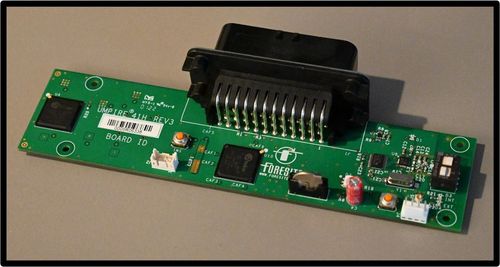
Today’s Electronic systems require improved reliability, where cleanliness is a key factor in addressing performance problems. The cleanliness of electronic hardware has historically been assessed by visual inspection, particle and debris levels, and the average conductivity of a solvent after exposure to the entire circuit board. However, these general tests do not correlate with predictive performance. Electrical and Functional test methods ensure that the surface residues are at a low enough level between the component leads and pads.
Clean (good) cleanliness ensures that component lead and entrapment areas are isolated and insulating, which allows circuits to perform as designed.
Dirty (bad) cleanliness contains surface residues at a level high enough to react with environmental moisture, creating a conductive/corrosive condition that harms circuit performance, pad-to-pad, lead-to-lead, and in entrapment areas below component structures.
Functional (live) components in combination with SIR components, tested at temperature, humidity, and bias, can evaluate the key elements of the process and interactions.
The test method provides the following insights:
- Proper flux outgassing of the reflow processes (top and bottom) under BGAs, QFN, and chip components
- Interactive effect of selective soldering on 4 PTH areas of the pallet/fountain/hand and the overspray or flooding of the flux system with nearby SMT components
- IPC 610 inspection on the standard component and functional components
- Cleanliness assessment of the key areas of a No-Clean and Cleaned process, including rework and repair soldering steps with brush cleaning
- Solder quality using X-Ray and Cross-Sectional analysis
- Process and Material evaluation on SIR - Functional Circuits in a STESS testing environment
Is the View worth the Climb?
High Reliability Hardware has many processes, materials, and components
- Multiple variables impact cleanliness
- PCB Fabrication – wet/etch/rinse processes
- Component Fabrication – plating/de-flash/rinsing
- Soldering Processes – Multiple step
- Reflow 1st side paste/flux residues
- Reflow 2nd side paste flux residues
- Selective wave/fountain soldering – pallet/isolation/transfer /entrapment
- Hand-soldering followed by brush cleaning with solvent and a swab/brush
- Cleaning or No Cleaning
- Coating/Staking Compound
- Housing/Enclosure/Air quality
Functional—combined with SIR—testing, is an assessment of the materials from fabrication, thermal effects from multiple interactive soldering processes, cleaning/rinsing and drying, followed by rework/touch-up and localized cleaning at the pad-to-pad, lead-to-lead, and under-entrapment areas. Electronic performance is predicated on the optimal performance of each component, which leads to working in isolation to achieve optimal circuit performance. Cleanliness value for the total board is the average of all residues and surfaces, including open areas and critical sites, and rarely correlates with predictive performance due to the layers of dilution and averaging that occur.